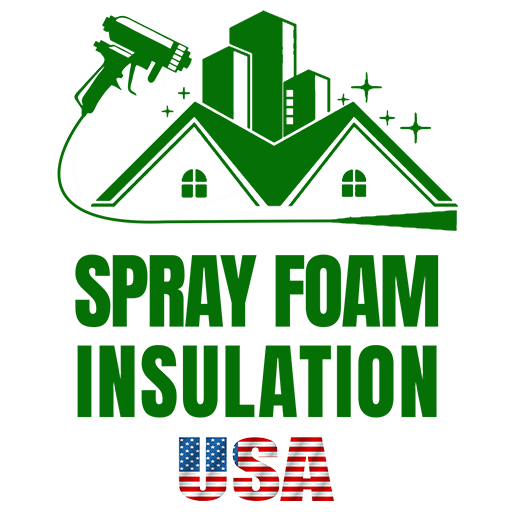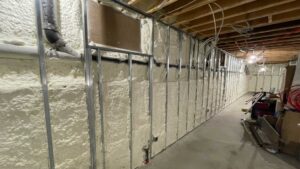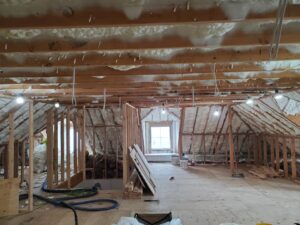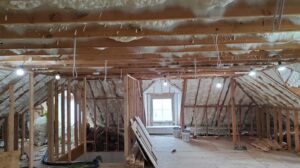Introduction
When considering home improvements that offer a return on investment, attic insulation cost stands out, particularly for its significant benefits in energy efficiency and cost savings. If you’re weighing the upfront expense against long-term savings, here’s a quick look:
- Reduced Heating and Cooling Bills: Proper insulation can lower your energy costs by 15% to 50%.
- Increased Home Comfort: Insulation maintains stable indoor temperatures.
- Enhanced Property Value: Homes with improved energy efficiency appeal more to buyers.
Attic insulation serves as a barrier that keeps your home warm in the winter and cool in the summer, leading to less reliance on heating and cooling systems and, consequently, reduced energy bills. For homeowners and business owners in New York and New Jersey seeking eco-friendly insulation options, understanding the types of insulation and their respective costs is especially crucial. This simple upgrade can transform the energy efficiency of your property, contributing positively to both your wallet and the planet.

Understanding Attic Insulation Costs
When considering attic insulation, the costs can vary widely based on several key factors. Let’s break down these factors to help you plan your budget effectively.
Square Footage
The size of your attic is the primary factor in determining the cost of insulation. Attic insulation cost typically ranges from $1 to $7 per square foot. The larger your attic, the more materials and labor will be required, increasing the overall cost.
Material Types
There are several types of insulation materials, each with different costs:
– Blown-In Insulation: This includes materials like fiberglass, cellulose, and rock wool. Costs for these materials can range from $0.33 to $2.40 per square foot.
– Batt Insulation: This option is generally cheaper, costing about $2 to $4 per square foot.
– Spray Foam Insulation: This is on the higher end, costing between $3 to $5 per square foot.
– Structural Insulated Panels (SIPs): These are the most expensive, ranging from $4 to $7 per square foot.
Labor Costs
The complexity of installing attic insulation affects labor costs. Professional installation can range from $40 to $70+ per hour depending on the type of insulation and the difficulty of the job. For example, blown-in insulation might require specialized equipment and skills, which can increase labor costs.
DIY vs. Professional
Deciding between DIY and hiring a professional depends on your comfort level with home improvement tasks and the complexity of the insulation type.
– DIY: This can be cost-effective, especially for simpler types like batt insulation. However, you’ll need to consider the cost of rental equipment and materials.
– Professional: While more expensive upfront, hiring a professional ensures the job is done efficiently and correctly. This can prevent costly mistakes and ensure that your insulation is installed for maximum effectiveness.
Understanding these costs and how they interact with your specific attic space and insulation needs is crucial. Whether you choose to DIY or hire a professional, getting a clear picture of these expenses will help you make an informed decision that balances cost with effectiveness.
Types of Attic Insulation
When considering upgrading your attic insulation, it’s important to understand the different types available. Each type has its own benefits and costs, which can influence your decision based on your specific needs and budget.
Blown-In Insulation
Blown-in insulation is a popular choice for many homeowners due to its versatility and effectiveness in filling irregular spaces and gaps. There are three main materials used for blown-in insulation:
-
Fiberglass: This is made from fine glass fibers and is one of the most commonly used materials. It’s cost-effective, with prices ranging from $0.40 to $1.10 per square foot. It’s also fire-resistant and helps reduce noise, making it a solid choice for general attic insulation needs.
-
Cellulose: Composed mainly of recycled paper treated with fire retardant, cellulose is an eco-friendly option. It costs between $0.60 and $2.30 per square foot. It has a higher R-value per inch than fiberglass, offering better thermal resistance.
-
Rock Wool: Known for its excellent fire resistance and soundproofing qualities, rock wool is made from basalt rock and recycled slag. The cost is slightly higher, ranging from $1.40 to $2.10 per square foot. It’s particularly recommended for areas requiring enhanced fire resistance, such as near garages.
Batt Insulation
Batt insulation comes in pre-cut panels, which are easy to handle and install, making them ideal for DIY projects. It’s well-suited for areas with standard joist and stud spacing:
-
Fiberglass Batts: These are simple to install and are an economical choice, providing good thermal resistance and sound insulation.
-
Cellulose Batts: These are denser and provide better soundproofing and thermal properties but are heavier and might require professional installation.
-
Denim Batts: Made from recycled blue jeans, these batts are an eco-friendly option that’s safe to touch and requires no special equipment for installation.
Spray Foam Insulation
Spray foam insulation is sprayed into place, expanding to fill nooks and crannies, thus creating an airtight seal. It comes in two types:
-
Open-cell Foam: Lighter and more affordable but less effective at blocking moisture.
-
Closed-cell Foam: Offers higher R-values and acts as a vapor barrier, ideal for extreme temperature variations.
Structural Insulated Panels (SIPs)
SIPs consist of a layer of foam insulation sandwiched between plywood or oriented strand board (OSB). They are pre-manufactured and delivered ready to install, providing a quick and efficient insulation solution, especially suitable for new constructions or major renovations.
-
Plywood SIPs: Provide a traditional look and are often used in residential construction.
-
OSB SIPs: More cost-effective than plywood, strong and durable.
Each insulation type has its own set of advantages that can cater to different needs, whether it’s cost efficiency, ease of installation, or maximizing energy savings. Understanding these options allows you to make a well-informed decision that aligns with both your budget and your home’s specific requirements.
Benefits of Attic Insulation
When considering home improvements, attic insulation emerges as a standout choice for its broad spectrum of benefits. Here, we delve into how attic insulation enhances energy savings, improves air quality, and stabilizes indoor temperatures.
Energy Savings
The primary allure of attic insulation is its potential for energy savings. Insulating your attic can significantly reduce the need for heating in winter and cooling in summer. This happens because insulation acts as a barrier, preventing heat from escaping in cold months and blocking heat from entering during warmer periods. According to various studies, homeowners can see a reduction in their heating and cooling costs by about 15% to 25%. This makes attic insulation not just a home improvement, but a smart financial decision.
Improved Air Quality
Another significant benefit of proper attic insulation is the improvement in indoor air quality. Insulation can help seal out pollutants and allergens that might otherwise enter through your attic. This is especially beneficial for individuals with allergies or respiratory issues. By creating a cleaner indoor environment, attic insulation contributes to healthier living conditions.
Temperature Stability
Insulation contributes to temperature stability within your home. This means fewer hot or cold spots and a more uniform temperature throughout different rooms. Whether it’s a scorching summer day or a freezing winter night, insulated attics help maintain a comfortable living space without the constant need to adjust the thermostat. This not only enhances comfort but also reduces the strain on your HVAC system, potentially extending its lifespan.
Each of these benefits—energy savings, improved air quality, and temperature stability—illustrates why attic insulation is more than just a building requirement; it’s a crucial enhancement for any home. By maintaining a more consistent internal environment, reducing utility bills, and fostering a healthier indoor atmosphere, attic insulation offers a triple benefit that is hard to overlook. As we move to explore the cost aspects and types of attic insulation, these advantages set the stage for understanding the true value of this investment.
Calculating Your Attic Insulation Investment
Understanding the costs involved in attic insulation is crucial to making an informed decision. This section breaks down the expenses associated with different types of insulation, installation, and even replacement costs.
Cost Estimator
To get started, you’ll need a basic understanding of your attic size and the type of insulation that fits your climate and home structure. Typically, attic insulation cost ranges from $1 to $7 per square foot, depending on the materials and method used. You can use an online cost estimator tool which considers your attic’s square footage and your preferred insulation type to provide a rough cost estimate. This tool is a first step in planning your budget.
Insulation Cost by Type
Different insulation materials come with varying costs:
– Blown-In Insulation: Costs between $1 to $4 per square foot. Ideal for attics with irregular shapes or numerous obstructions.
– Batt Insulation: Ranges from $2 to $4 per square foot. Easier for DIY projects and standard-sized attics.
– Spray Foam Insulation: This can cost between $2 to $5 per square foot. Excellent for sealing gaps and adding a high level of insulation.
– Structural Insulated Panels: The most expensive, ranging from $4 to $7 per square foot, but provide robust insulation for new construction.
Attic Insulation Install Cost
The installation cost can vary widely based on whether you choose to DIY or hire a professional. Professional installation typically includes a detailed assessment and precision in installation, costing between $1,700 to $2,500 on average. This price includes both the material and labor costs. For those considering DIY, remember to factor in the cost of rental equipment and your time.
Insulation Replacement Cost
Replacing old or damaged insulation is sometimes necessary to maintain efficiency. The cost to remove old insulation before installing new material generally adds $1 to $2 per square foot to your total expenses, depending on the accessibility and condition of the existing insulation.
By understanding these costs and planning accordingly, you can make a sound investment in attic insulation that not only enhances your home comfort but also contributes to long-term energy savings. As we proceed, consider these figures and how they might influence your decision between tackling the project yourself or hiring professionals.
DIY Attic Insulation vs. Hiring a Professional
When it comes to attic insulation, deciding whether to DIY or hire a professional can make a significant difference in both cost and quality. Here’s a look at the factors you should consider:
Tools
DIY: You’ll need specific tools such as insulation blowers for blown-in insulation, which can be rented for $175 to $250 per day. Other essentials include utility knives, measuring tapes, and safety gear like goggles and dust masks.
Professional: Professionals come equipped with all necessary tools, which are often more advanced and efficient for the job.
Skills
DIY: Installing insulation requires basic construction skills, understanding of how to measure and cut insulation material, and knowledge of where the material should be placed for optimal effectiveness.
Professional: Professionals have extensive training and experience. They understand building codes and have the expertise to navigate tricky attic spaces, ensuring that the insulation covers all nooks and crannies without damaging your property.
Time Investment
DIY: Insulating your attic can be time-consuming, especially if you’re new to the process. It could take multiple weekends to complete, depending on the size of your attic and the type of insulation.
Professional: Hiring a professional can significantly reduce the time it takes to complete the job. What might take you several days could be done in just 6 to 8 hours by a skilled team.
Professional Expertise
Professionals not only install the insulation faster but also ensure it’s done correctly. This expertise helps prevent issues such as uneven insulation, missed spots, or improper material choice, which can affect your home’s energy efficiency. They can also identify and address potential problems such as mold or air leaks, which might go unnoticed in a DIY project.
Making Your Choice
When to DIY: If you have experience with home improvement, access to necessary tools, and time, DIY could be a cost-effective choice. It’s suitable for simpler projects like adding batt insulation to an open attic space.
When to Hire Professionals: For most homeowners, the complexity of properly insulating an attic — especially if it involves blown-in or spray foam insulation — makes hiring professionals a more reliable option. This is particularly true if your attic has complex features or you’re looking for high-quality, long-lasting results.
By understanding these key aspects, you can better decide whether to invest in DIY attic insulation or to seek professional services. The goal is to enhance your home’s energy efficiency and comfort, and sometimes the initial higher cost of professional service can pay off in the long run through better performance and energy savings.
Frequently Asked Questions about Attic Insulation
Is Attic Insulation Worth the Investment?
Absolutely! Attic insulation is a smart investment for several reasons. First, it significantly reduces your heating and cooling bills. One homeowner reported a more than 50% reduction in their heating bill during the winter after installing blown-in insulation. Besides the immediate cost savings, attic insulation also increases the comfort of your home by maintaining a more consistent indoor temperature and reducing the strain on your HVAC system.
Furthermore, proper insulation improves your home’s resale value. Many buyers today are looking for energy-efficient homes. Having a well-insulated attic is a desirable feature that can make your property stand out in the competitive real estate market.
How Often Should Attic Insulation Be Replaced?
Attic insulation does not have a one-size-fits-all lifespan. Generally, it can last up to 50 years if it remains dry and undisturbed. However, several factors might require earlier replacement:
– Water Damage: If insulation becomes wet due to roof leaks or flooding, it needs to be replaced to prevent mold and mildew.
– Infestations: Pest infestations can damage insulation, making it less effective.
– Physical Damage: Renovations or foot traffic in the attic can compress or displace insulation, reducing its effectiveness.
It’s a good practice to inspect your attic insulation annually for any signs of damage or deterioration. This ensures that your insulation continues to perform optimally.
What is the Most Cost-Effective Attic Insulation?
The most cost-effective attic insulation depends on your specific needs, but here are some general guidelines:
-
Blown-In Insulation: This is often the most affordable option, particularly for attics with irregular shapes or numerous obstructions. It provides excellent coverage and is relatively quick to install. Blown-in fiberglass and cellulose are popular choices, with costs typically ranging from $1 to $4 per square foot.
-
Batt Insulation: This is ideal for attics with standard joist spacing and few obstructions. It’s also a good option for DIY projects, as it’s easy to handle and install. Costs for batt insulation range from $2 to $4 per square foot.
-
Spray Foam Insulation: Although more expensive, spray foam offers superior air sealing capabilities. It’s particularly effective in attics with complex geometries or in climates with extreme temperature variations. The cost can range from $2 to $5 per square foot, but the long-term energy savings can be significant.
When considering which type of insulation to use, factor in not only the initial installation cost but also the potential energy savings over time. Often, spending a bit more upfront on a higher-quality insulation material can lead to greater savings in the long run.
By understanding these common questions, you can make informed decisions about attic insulation that will benefit your home’s comfort, efficiency, and value. Whether you choose a DIY approach or hire a professional, the goal is to achieve a well-insulated attic that enhances your home’s energy efficiency and comfort.
Conclusion
In wrapping up our discussion on attic insulation, it’s clear that the benefits extend far beyond just the initial investment. By choosing the right insulation for your attic, you not only enhance your home’s energy efficiency but also improve overall home comfort.
Energy Efficiency
A well-insulated attic is a key factor in reducing your home’s overall energy consumption. With proper attic insulation, such as spray foam, you minimize the heat loss during winter and reduce heat gain during summer. This means your HVAC system doesn’t have to work as hard, leading to lower energy bills. Over time, the savings on your energy bills can significantly offset the attic insulation cost.
Home Comfort
Attic insulation does more than just save you money; it directly affects the comfort of your living environment. Proper insulation ensures that temperature fluctuations inside your home are minimized, keeping it warmer in the winter and cooler in the summer. Moreover, materials like spray foam can also help reduce noise from outside, making your indoor environment quieter and more serene.
Spray Foam Insulation USA
At Spray Foam Insulation USA, we specialize in providing top-quality attic insulation solutions that are designed to meet the unique needs of your home. Our spray foam insulation offers a superior barrier that not only insulates but also seals air leaks, offering an all-in-one solution for enhancing your home’s energy efficiency and comfort.
By investing in the right attic insulation, you’re not just improving your home for today; you’re setting the stage for long-term savings and comfort. Our team at Spray Foam Insulation USA is here to help guide you through the options and find the best solution for your home. Contact us today to learn more about how we can transform your attic into a more energy-efficient and comfortable space.
The right insulation can make all the difference. Let us help you make your home the best it can be with state-of-the-art attic insulation solutions.





